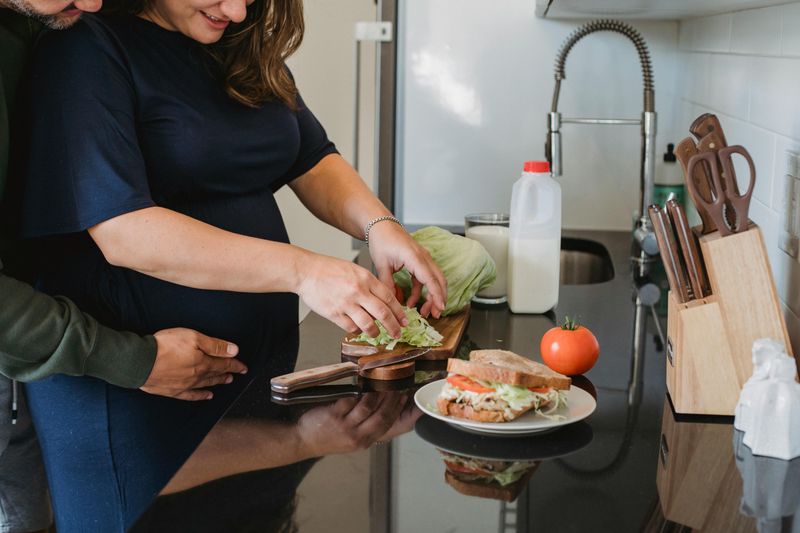11 Simple Marriage Rituals That Make Relationships Stronger and Happier, According to Therapists

Every strong marriage has secret ingredients that keep the flame alive. These aren’t grand gestures or expensive trips – they’re small, everyday rituals that build connection over time. Marriage therapists have identified simple practices that successful couples incorporate naturally into their relationships. These tiny habits might seem insignificant, but they create the foundation for lasting love and happiness.
1. Give Each Other Thoughtful Surprises

Marriage thrives on thoughtfulness. Surprising your partner with their favorite candy bar after a tough day or picking up their preferred coffee blend shows you’re paying attention to their preferences and needs.
These small tokens communicate a powerful message: “I was thinking about you even when we were apart.” The joy comes not from the gift’s value but from the thoughtfulness behind it.
Partners who regularly exchange these mini-surprises report feeling more appreciated and understood. The ritual creates a cycle of generosity where both people feel motivated to notice and respond to each other’s needs.
2. Schedule Regular Emotional Check-ins

“How are you really doing?” might be the most powerful question in marriage. When asked genuinely and regularly, this simple inquiry creates space for honest conversation beyond surface-level updates.
Successful couples make time for these check-ins, whether during evening walks or quiet moments before bed. They listen without immediately trying to solve problems, allowing feelings to be expressed without judgment.
Marriage therapists recommend scheduling these conversations during calm periods, not just during conflicts. This ritual builds emotional intelligence and helps partners track each other’s internal worlds, preventing disconnection before it starts.
3. Move Your Bodies Together

Shared physical activity creates unique bonding opportunities for couples. Whether it’s morning yoga, evening walks, or weekend hikes, moving together releases endorphins that get associated with your partner’s presence.
Many couples report that some of their best conversations happen during these movement sessions. The side-by-side positioning feels less confrontational than face-to-face interactions, making it easier to discuss sensitive topics.
Exercise partners also witness each other’s growth and perseverance. Celebrating fitness milestones together creates shared victories that strengthen your connection beyond the physical benefits of staying active.
4. Request Small Favors

Contrary to what you might think, asking for help strengthens relationships. When you request assistance opening a stubborn jar or reaching a high shelf, you’re actually creating opportunities for your partner to feel competent and needed.
Marriage experts call this “interdependence” – the healthy middle ground between complete independence and codependence. These small requests reinforce that you’re a team tackling life together.
The key is balance. Both partners should feel comfortable asking for and providing help. This mutual vulnerability creates trust and reinforces that neither person needs to handle everything alone.
5. Express Gratitude for Everyday Actions

“Thank you for taking out the trash” might sound mundane, but acknowledging routine efforts prevents partners from feeling invisible. The happiest couples don’t save gratitude for extraordinary occasions – they recognize daily contributions.
Appreciation works like relationship fuel. When someone feels their efforts matter, they’re naturally motivated to continue contributing positively. This creates an upward spiral of goodwill.
Try noticing three things your partner does each day that you typically take for granted. Mentioning these specifically – “I appreciate how you always remember to lock up at night” – makes your gratitude more meaningful than generic thanks.
6. Prioritize Physical Connection Daily

The power of touch extends far beyond romance. Holding hands while watching TV or sharing a quick hug before leaving for work creates neurochemical responses that reduce stress and increase feelings of security.
Long-term couples who maintain physical affection report higher relationship satisfaction even during difficult periods. The touch doesn’t need to be elaborate – a hand on the shoulder or feet touching under the table sends powerful connection signals to the brain.
Marriage counselors often prescribe a “20-second hug” ritual daily. This extended embrace is long enough to release oxytocin, creating a physiological bond that helps partners feel emotionally in sync.
7. Perform Acts of Service With Intention

Making your partner’s coffee exactly how they like it, even when you’re exhausted, demonstrates love through action. These small sacrifices become powerful when done mindfully rather than grudgingly.
The strongest marriages involve both partners occasionally stretching beyond convenience. Relationship experts suggest mentally reframing these moments: “I’m choosing to do this because our relationship matters more than my momentary comfort.”
These intentional acts build relationship resilience. During conflicts, couples can recall these moments as evidence of commitment, remembering that love isn’t just feeling – it’s a series of choices made day after day.
8. Invest in Personal Well-being

The strongest marriages involve two individuals who take responsibility for their own happiness. Self-care isn’t selfish – it’s essential maintenance that prevents relationship burnout.
Partners who maintain individual hobbies, friendships, and health practices bring more energy and perspective to their relationship. They’re less likely to become resentful or make unfair demands on their spouse to fulfill all their needs.
Therapists recommend regularly asking: “What do I need right now to be my best self?” Whether it’s alone time, exercise, or creative expression, meeting these needs independently creates a healthier partnership where both people can truly thrive together.
9. Exchange Daily Highlights and Lowlights

Sharing the ordinary moments of your day creates intimate connection. Many couples establish a dinner ritual where each person mentions the best and worst parts of their day, no matter how trivial they might seem.
This practice prevents the common drift where partners gradually know less about each other’s daily experiences. Even mundane updates like traffic frustrations or workplace victories help couples maintain their shared reality.
Therapists note this ritual works best when partners practice active listening without interrupting. The goal isn’t problem-solving but witnessing each other’s experiences with genuine curiosity about what matters to your partner.
10. Complete Household Tasks as a Team

Folding laundry might not seem romantic, but couples who tackle chores side-by-side often report feeling more connected. Working together on household maintenance creates a tangible sense of partnership and shared purpose.
This ritual addresses one of the most common sources of relationship conflict: unequal domestic responsibilities. When both partners regularly contribute to maintaining their shared space, resentment is less likely to build.
The conversation that happens during these shared tasks often flows more naturally than forced date-night talks. Many couples find they communicate more authentically while washing dishes together than during more structured interaction attempts.
11. Cultivate Comfortable Silence Together

Not every moment needs conversation. Mature relationships include comfortable silences where partners enjoy simply being in each other’s presence without the pressure to entertain or engage.
These quiet moments – reading books side by side or watching a sunset without commentary – create a different kind of intimacy. They signal complete acceptance of each other without performance or effort.
Relationship experts consider this capacity for peaceful coexistence a sign of secure attachment. Partners who can enjoy silence together have moved beyond the anxious need for constant reassurance, settling into a deeper trust that the connection remains even in quietness.

Comments
Loading…